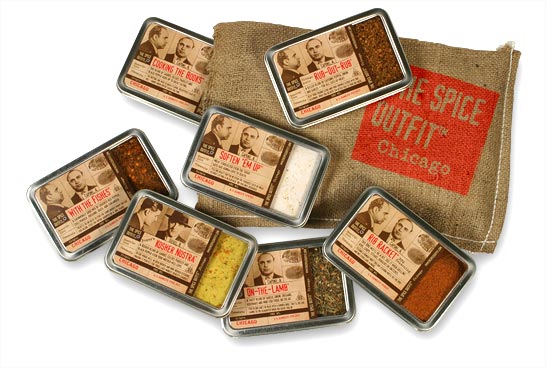 Folks in the business, like me, are generally the most critical of what works for direct mail and what doesn’t. While some designers will be focused more on what they can do to win their next award, the better ones realize that awards given for design rather than results are not what’s most important. Successful results for our clients and their customers are the ultimate goal.
Folks in the business, like me, are generally the most critical of what works for direct mail and what doesn’t. While some designers will be focused more on what they can do to win their next award, the better ones realize that awards given for design rather than results are not what’s most important. Successful results for our clients and their customers are the ultimate goal.
Now don’t mistake that for a license to create something completely cluttered and too busy to be legible, too ugly to leave out in the open or too poorly printed to be taken seriously. Even the ubiquitous used car salesman needs to be taken seriously and trusted long enough to make the sale.
In a nutshell, you have three goals to achieve in mere seconds:
- Grab attention/look legit.
- Engage.
- Compel to act.
That’s it. How you accomplish these goals is up to you, but you can learn from those who’ve come before.
Design Tips
Even if you’ve done everything right, decent response rates can still be tough to snag. So let’s assume your list is dead-on, your offer is proven and your brand is strong. What else should you be looking out for to nail that extra response rate beyond the “barely surviving” 1-2% rates experienced by many direct mailers? In no particular order:
- Avoid stock images that are already used and seen everywhere. Look for the unique and if you can afford it, create unique imagery that no one else will ever have. And make sure it supports your brand’s personality. I received two direct mail post cards, each with a man wearing a dress shirt and tie, same camera angle. Not even the same photo, but I laughed anyway (after which, they ended up in the trash receptacle).
- Invest in a quality product photo. Don’t include a product photo that’s taken off your website or shot poorly. Make sure the product is clear and details are visible if needed. If it’s food, make it drool worthy.
- Don’t use paper that’s wimpy. Makes you look wimpy and cheap, like a poorly fitting suit or worse yet, a limp handshake. Ick!
- Do use bumps in enclosed envelopes. They significantly increase your open rate. Just make sure your envelope is sturdy enough for the bump so it doesn’t break through. And particularly if it’s a large mailing, be certain to check out mailing costs.
- Snipes, bursts, intercepts—a designer’s nightmare. Yeah, designers hate these because they’re ugly. Yes, they are truly ugly. But in the right situation, under the right light, with the right neighboring elements and the right message, an intercept can be the right thing to do. Just don’t use it to say something lame. Make it purposeful and make absolutely certain it supports the primary goal of the direct mail rather than confusing the message.
- Keep your direct mail focused on a single goal. You’re not creating a catalog here. Get to the point quickly and don’t be too wordy (or graphicky) about it. Time is of the essence. You have mere seconds. Seconds!
- Make sure the format of your direct mail is appropriate to your goal. Small ticket item? Consider using a post card. Selling a $500 watch? Better send a brochure with a lifestyle message and ditch the intercepts, keep it classy. Looking for donations? A cover letter is in order along with a good story about where the money’s going.
- Don’t ignore your brand’s personality and look. Just because it’s ‘direct mail’ and we previously told you not to worry about the color of the sky, you can’t abandon your brand’s personality either. And I’m not just talking about the logo. If your brand is as classy a brand as, say, Tiffany’s, you’d better not skimp on quality. Fail to print the right turquoise or remember to focus on what sells (i.e. sparkle) and your mailing is sure to go south. However, if you’re brand is kitschy by nature, include that kitschy look in your direct mail.
- Don’t convolute your product with a misleading or meandering story. Stay on point and be clear and concise.
- Don’t forget the incentive. Whether direct or implied, make sure it’s there. Is it 15% off the first purchase? Is it a gentle reminder not to forget a holiday like Valentine’s Day or Father’s Day coupled with an offer? Direct mail is not the best tool for corporate or brand awareness, but it is perfect for timely incentives.
- Be careful if using teasers on the cover with the complete thought on the inside. Doesn’t mean it can’t be done, but it’s hard to do well. Most folks won’t take the time. In fact, eight out of 10 trash advertising mail instantly. The remaining two will take only a few seconds to make a decision. If it doesn’t peak their interest, in the trash it goes. If it doesn’t appeal to them viscerally, in the trash it goes.
- Don’t underestimate a good design’s ability to create a positive gut reaction. But steer clear of designers who want to make your text too small (unreadable in the hallway light) or writers who think they’re writing general advertising copy.
- Scanning trumps actual reading. Make your direct mail scannable. Once you’ve landed folks with the key points they’re looking for, feed them the details. And remember, your headlines matter more than your body text in direct mail, but you still need body copy that provides necessary information in a clear and concise manner. Make every word earn its space.
- Too many screamers (that’s exclamation points to you writers). Looks cheesy and desperate. Don’t do this!!!!! (Yeah, that.)
Whether your direct mail is 3-dimensional or flat, making sure your strategy, design and offer fit the targets is the best way to improve your ROI.
By Julia Moran Martz








